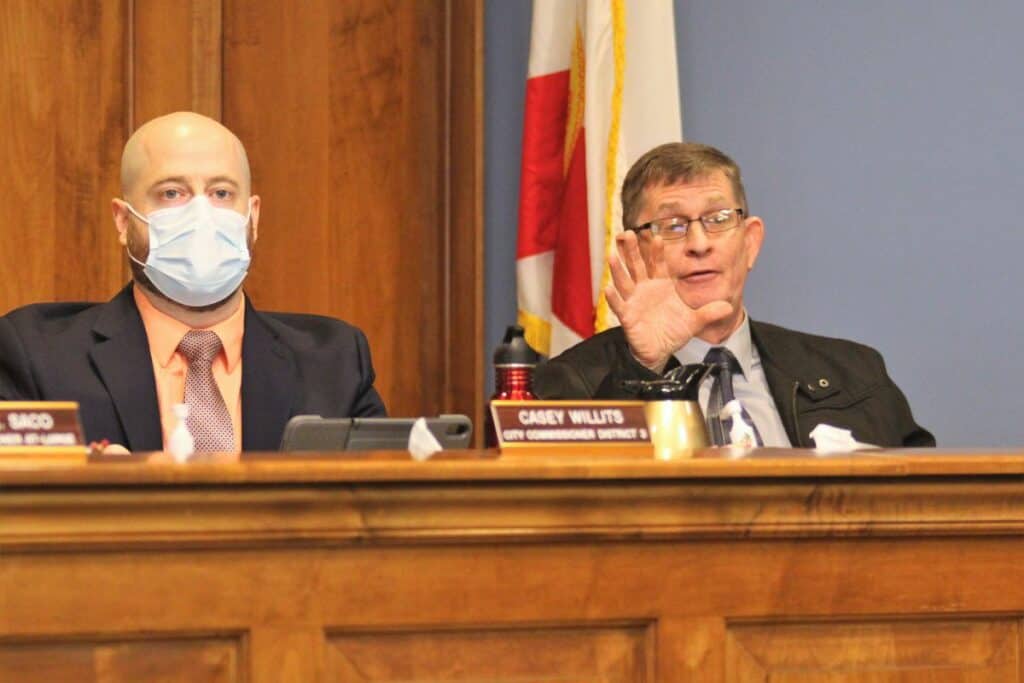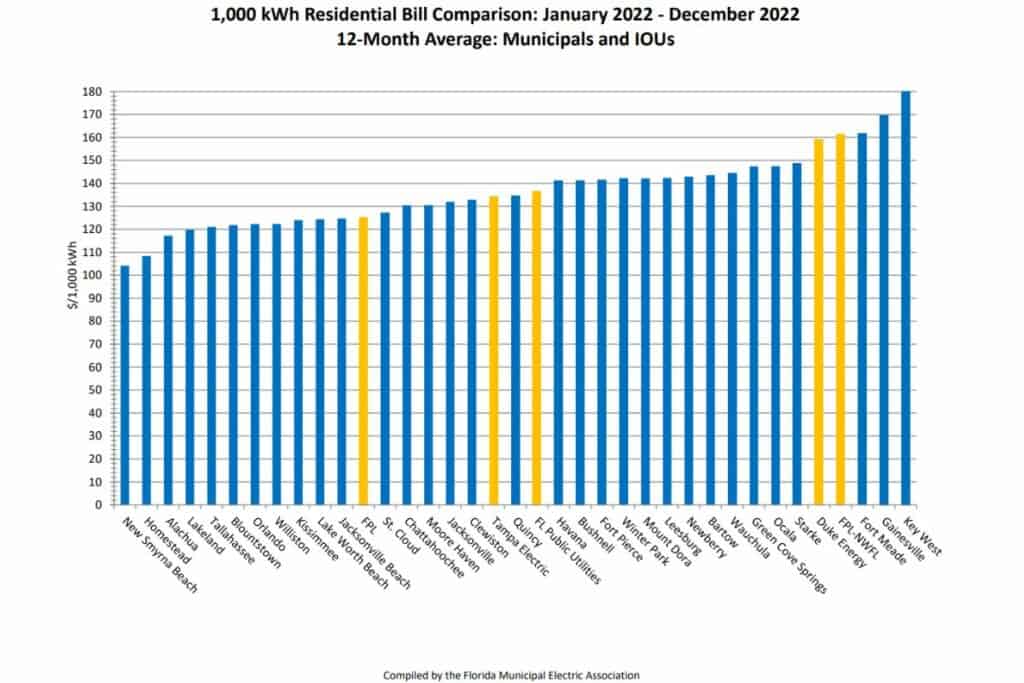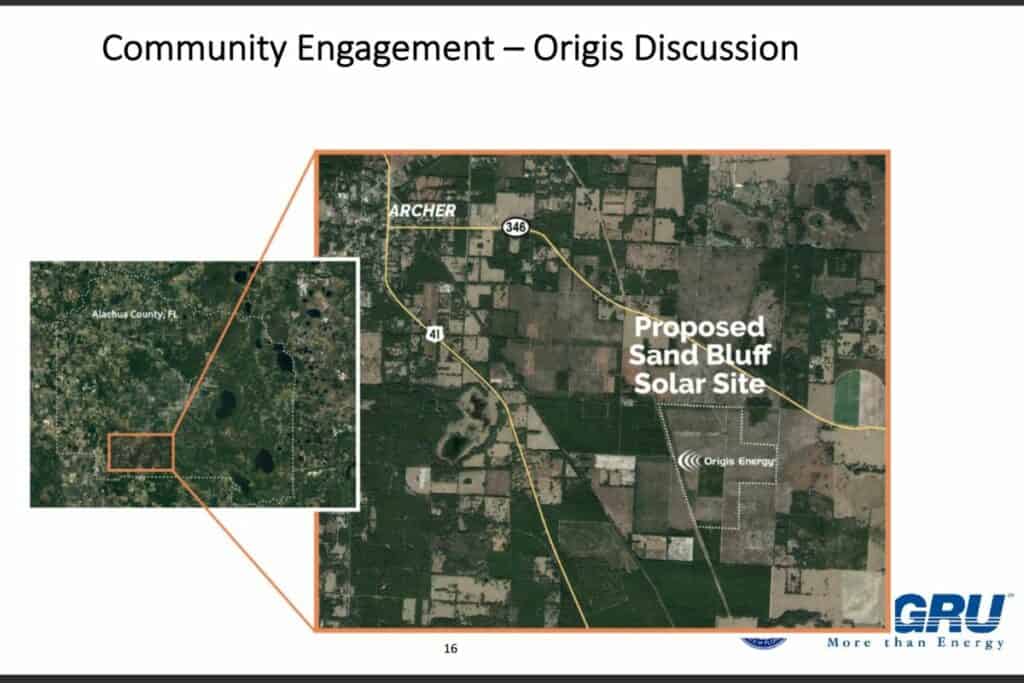
Gainesville continues toward utility-scale solar power after a unanimous commission vote on Thursday that will bring 74.9 megawatts of solar starting in 2025.
The city commission rejected two alternative options in favor of altering the terms of its existing contract with Origis Energy, keeping the project on its original timeline.
The new terms also keep a 20-year fixed energy rate for the city and allow battery storage. The solar array will also increase from the original 50 megawatts to 74.9 megawatts.
The exact cost of the contract remained redacted in the backup documents along with the penalties for not meeting the operational date.
Commissioners expressed their support along with that of constituents.
Gainesville Regional Utilities (GRU) said inflation over the past two years made the modifications necessary to continue. Origis approached GRU about the changes, leaving the city with three options as outlined by GRU’s Chief Sustainability Officer Eric Walters.

First, the city could end the contract with Origis and issue a new request for proposals from contractors. Walters said this would result in a two-year delay for GNV’s solar array and contain more price risk as the construction market continues to rise.
Since the contract with Origis began in the summer of 2020, Walters said lithium prices have jumped 900%, PVC pipe has increased 134% and a host of other materials have followed suit.
“This graph is really indicative of what we’ve all felt in our finances over the past year or so, just everything getting more expensive,” Walters said, referring to the lithium prices.
Second, GRU could end the contract with Origis and build its own solar array, bypassing any third-party control.
Walters said this option contains even more uncertainty and risk for GRU than the first. Plus, it still includes a two-year delay. Walters said GRU building its own solar array would also cost about the same as agreeing to the contract modification with Origis
Third, the city could agree to the modified contract. This option keeps the timeline intact and builds on the work Origis has already done to find an appropriate site.
Origis plans to build the proposed Sand Bluff Solar Site southeast of Archer. Because a 74.9-megawatt facility needs 300-500 acres, few options exist within the Gainesville city limits, Walters said.
The proposed site comes after Archer residents rejected the initial site location—one and a half miles to the north and near a historic, rural African American community and cemetery.
The Alachua County Board of County Commissioners rejected Origis’ development plans for the site because of the community resistance, but Origis continued working with those opponents.
In June 2022, Origis and the Archer residents held a joint press conference. The two had signed an agreement to eliminate the first proposed site from consideration, and Origis withdrew a petition that looked to bypass Alachua County’s denial.
Nathan Skop, attorney for 42 Archer residents, highlighted the agreement as an example of working together to find a win-win solution.
Walters said the new location will have no homes within 2,000 feet. The ordinance passed by the city commission also discourages the consideration of the first location for a solar array in the future, giving Archer residents agreements from Gainesville and Origis.
GRU already has the highest use of renewable energy in the state with around 30% of energy coming from biomass, solar and landfill gas.
“To my knowledge, there is no other utility in the state of Florida that’s even in the double digits, so we are clearly a leader in the state in that area,” Walters said.
The new solar array will bring Gainesville to 50% renewables and closer to its stated goal of net zero by 2045.
The net zero goal has also contributed to GRU’s debt, and because the city uses GRU to back its financials, that debt contributed to a credit rating downgrade in January.
In the 2023 financial year, GRU will spend just over $104.4 million on debt service. That constitutes 22.57% of its annual budget. GRU’s total outstanding debt is $1.69 billion.
“We’ve taken on debt because we’ve responded to the community’s interest in renewable energy, and that has come at a cost,” Ward said in a January interview.
At a commission workshop on Wednesday, GRU’s Chief Financial Officer Claudia Rasnick said that 22.57% is an unusually high percentage of the total annual budget for a utility.
Residents have also decried GRU’s electric rates that remain above other Florida utilities. In December 2022, only Key West had higher residential rates.

Suggested Articles
No related articles found.




“To my knowledge, there is no other utility in the state of Florida that’s even in the double digits, so we are clearly a leader in the state in that area,” Walters said.
I’ve got to ask – was he talking about alternative energy or the debt service amount? Maybe Walters like to use phrases that can be considered multi-taskers and it applies to both in one statement?
When this all washes out, I hope it doesn’t hurt the surrounding communities too much. I believe it’s going to be pretty bad when they finally realize just what they’ve done.
Of course the “stated goal of net zero by 2045” doesn’t account for all of the energy cost used to build the “renewable” energy sources. Mining those rare metals for all of those batteries has both a human and environmental cost to it. They are often mined by slave labor using equipment powered by fossil fuels.
You might want to follow up on battery tech, eg Sodium which is PLENTIFUL.